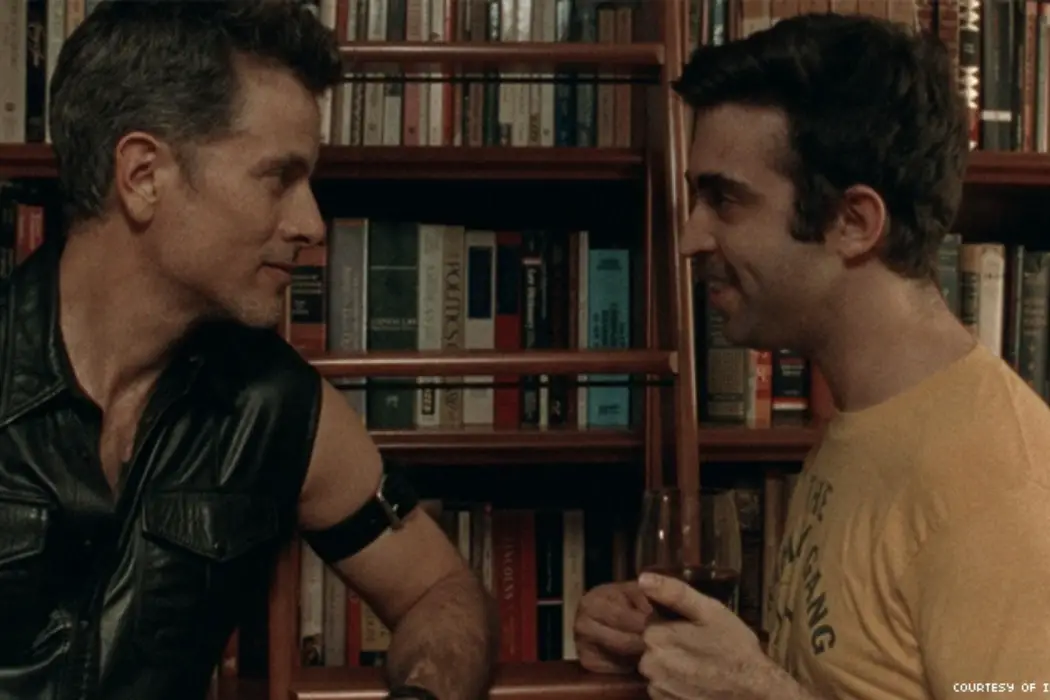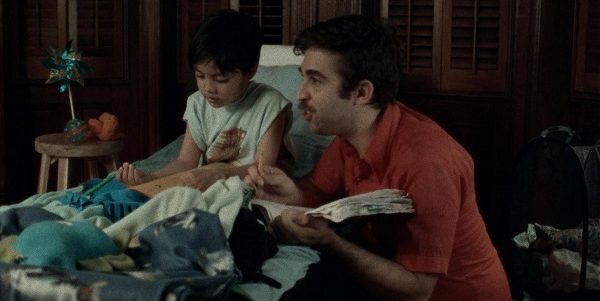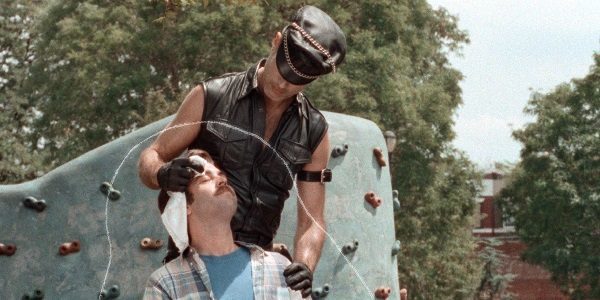CUBBY: Quirky Coming of Age Film Gets Lost In Its Narrative

Janet is a writer based in Salt Lake City. A…
The transition from youth to adulthood occurs at varying times. It’s not necessarily contingent on age, but rather, circumstances that come our way. “Based on a lie,” Cubby brings anxiety riddled challenges of adulthood. This coming-of-age tale from directors Ben Mankoff and Mark Blane isn’t focused on the teenage years; it’s refreshingly focused on a 26-year-old gay artist who is just moving out of his small town home in Indiana.
The film, shot on 16mm, explores the desire of wanting to feel accepted and finding contentment within oneself in a world that feels disconnected. It brings the quirk and charisma of growing pains, but they disappointingly fizzle out. Cubby fails to provide an introspective look into loss and growth. While it’s set up with a poignant perspective that traverses through the day-to-day complexities and challenges of a grown man who is emotionally and socially strained, the film leaves out the necessary emotional arcs to gratify the end results.
Avoiding Adulthood At All Costs
When we first meet Mark (Blane, who also wrote the film), his mother (Patricia Richardson) is driving him from his garage room in Indiana to New York City where he claims to have gotten a job as an art gallery receptionist. The truth is, he doesn’t have any job or even housing prospects lined up.
While his reason for moving to the big city on such a whim is a mystery, we quickly learn that our protagonist is a bumbling bundle of contradictions – very tempermental, imbues childlike tendencies, takes anxiety pills more than he would like to, and draws BDSM-themed artwork.

Mark quickly picks up a babysitting job for a 6-year-old boy, Milo (Joseph Seuffert). It’s quite an ironic choice of profession, as he can barely take care of himself. But considering Mark is mentally and emotionally a child, spending time with Milo actually grants him a cushion from the real world.
Mark and Milo amicably draw fish, craft imaginative art projects, and eat copious amounts of candy together. Behind all of this youthful whimsy, lies the inevitable and daunting responsibilities of adulthood. As much as babysitting provides money, the part-time gig doesn’t provide the necessary means to push him financially and emotionally. Responsibilities loom over Mark like a dark cloud, and he’s constantly running, trying to avoid them at all costs.
Low On Income, But High On Drugs & BDSM
Soon enough, neglected responsibilities quickly start to rack up. Mark has little to no money to pay rent, fails to return his mother’s calls, doesn’t know how to express his feelings to a handsome face in the neighborhood, and shrinks amongst an entitled and obnoxious group of roommates (millennials who call themselves a “collective”). In survival mode, Mark resorts to anger and psychedelic cupcakes to check out of reality.

These cupcakes spark up fantasies, bringing out Leather-Man (Christian Patrick) – an iconic figure of the BDSM community aka Mark’s superhero. Leather-Man embodies maturity, confidence, and control that Mark longs for.
His presence allows Mark to get through certain events that he’d most likely falter through alone. Not only does he help Mark out with money, he teaches Mark about the importance of consent in BDSM. But what does that have to do with his personal growth and his art?
Issues Arise in Cubby’s Line-Up Of Characters
Leather-Man’s role in the film unfortunately feels underutilized and rather dull. He helps Mark feel safe, but he doesn’t necessarily help Mark realize the relevancy of being comfortable with himself. His presence in Mark’s life felt lacking. I felt that there needed to be more on Leather-Man’s end to not only help Mark move forward, but to overall, have a bigger purpose in the story.

And even if it wasn’t Leather-Man who was to serve as a catalyst to Mark’s self-growth, other characters such as Russell (Rodney Richardson), who foster vulnerability, lack the necessary screen time to give the film the pay off that it needs at the end. Not to mention, his relationship with his irksome, yet lovable mother feels abandoned and stunted.
A lot of the scenes and characters feel disconnected. Thus, we aren’t given a look at who Mark truly wants to be and how he becomes the person he is by the end. His character along with his relationship with those who play a relevant role in his life, aren’t fleshed out enough for us to feel invested in his journey of self-growth. As a result, the ending feels rather abrupt. We can’t help but to feel that something was missed.
Cubby: Conclusion
Deemed as a “quirky” coming of age film, there’s no denying the story carries its own eccentric style. Mark is an anxiety-riddled, socially and emotionally inept young man from a small town who is aimlessly navigating adult life in the big apple.
Aesthetically, the film pleases with animated illustrations that loom out during scenes along with the whimsical jingling music in the background. It’s charming and certainly reflects the whimsy and artistic state of mind that closely resembles the quirky Juno. The vintage and grainy look from the 16mm also gives the film an overall a feel of surrealism that meshes well Mark’s character and experiences.
If only these visuals were accompanied by developed narrative arcs, then Cubby would’ve been a strong film. Despite being framed with a charming style, it unfortunately fails to draw out compelling connections amongst its characters.
What are some of your favorite coming of age films? Please share by commenting below.
Cubby was recently shown at Outfest.
Does content like this matter to you?
Become a Member and support film journalism. Unlock access to all of Film Inquiry`s great articles. Join a community of like-minded readers who are passionate about cinema - get access to our private members Network, give back to independent filmmakers, and more.
Janet is a writer based in Salt Lake City. A strong advocate for underrepresented voices, she believes cinema is a transformative medium that challenges assumptions and creates diverse conversations.













